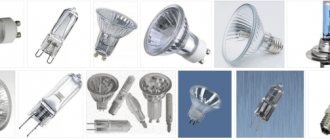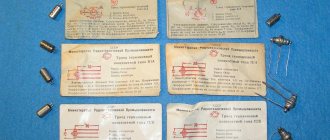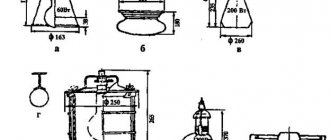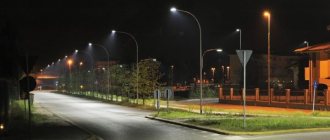Electricity is an ordinary and vital phenomenon for most people. And like any familiar thing, it is rarely noticeable. Few people wonder where it comes from, how it works, what can be done with it. However, it was studied long before our era and some mysteries still remain unanswered.
Who invented electricity - history
Particular manifestations of electricity were studied long before our era. But combining them into one theory that explains lightning flashes in the sky, the attraction of objects, the ability to cause fires and numbness of body parts or even the death of a person has proven to be a difficult task.
Since ancient times, scientists have studied three manifestations of electricity:
- Fish that generate electricity;
- Static electricity;
- Magnetism.
In Ancient Egypt, healers knew about the strange abilities of the Nile catfish and tried to use it to treat headaches and other diseases. Ancient Roman doctors used the electric stingray for similar purposes. The ancient Greeks studied in detail the strange abilities of the stingray and knew that the creature could stun a person without direct contact through a trident and fishing nets.
Somewhat earlier it was discovered that if you rub amber on a piece of wool, it will begin to attract hairs and small objects. Later, another material with similar properties was discovered - tourmaline.
Around 500 B.C. Indian and Arab scientists knew about substances capable of attracting iron and actively used this ability in various fields. Around 100 BC Chinese scientists invented a magnetic compass.
In 1600, William Gilbert, court physician to Elizabeth I and James I, discovered that the entire planet was one huge compass and introduced the concept of “electricity” (from the Greek “amber”). In his writings, experiments with rubbing amber on wool and the ability of a compass to point north began to be combined into one theory. In the picture below he is showing the magnet to Elizabeth I.
Playing with fire or the first gas jets
For the first time, electric energy began to be used en masse specifically for lighting, so the incandescent lamp can definitely be called the most popular device; it replaced the gas lamp. The beginning of the 19th century is characterized by the massive appearance of good lighting devices, and the history of lighting begins with it. The light intensity from gas jets is no longer sufficient, large houses and industries are being built, they need bright light, and the development of electric lighting begins. In addition, you need easily maintained devices, so you have to switch to an alternative type of supply of light to the premises.
The first gas lamps.
The science that studies electricity
Electricity is a natural phenomenon. It is partly studied in biology, chemistry and physics. Electric charges are most fully considered within the framework of electrodynamics, one of the branches of physics.
Theories and laws of electricity
There are few laws that electricity obeys, but they fully describe the phenomenon:
- The law of conservation of energy is a fundamental law that also governs electrical phenomena;
- Ohm's law is the basic law of electric current;
- The law of electromagnetic induction – about electromagnetic and magnetic fields;
- Ampere's law - about the interaction of two conductors with currents;
- Joule-Lenz law - about the thermal effect of electricity;
- Coulomb's law - about electrostatics;
- Rules of the right and left hands - determining the directions of the magnetic field lines and the Ampere force acting on a conductor in a magnetic field;
- Lenz's rule - determining the direction of the induction current;
- Faraday's laws on electrolysis.
First experiments with electricity
The first experiments with electricity were mainly of an entertaining nature. Their essence was in light objects that were attracted and repelled under the influence of a poorly understood force. Another interesting experience is the transmission of electricity through a chain of people holding hands. The physiological effect of electricity was actively studied by Jean Nollet, who forced an electric charge to pass through 180 people.
Our time, LED lamps
Light Emitting Diode or LED is one of the fastest growing technologies today. LEDs use semiconductors to convert electrical current into light. They are small in area, less than one square millimeter, and emit light in a specific direction, reducing the need for reflectors and diffusers.
This is the most efficient light source on the market. LED lamps consume minimal energy and can last up to ten years. This is no longer the history of electric lighting, but its future. We will definitely look at the history of the development of LED lighting in one of our next articles.
Where does electric current come from?
Electricity supplied through wires to homes is generated by an electrical generator at various power plants. On them, the generator is connected to a constantly rotating turbine.
The design of the generator has a rotor - a coil, which is located between the poles of the magnet. When the turbine rotates this rotor in a magnetic field, according to the laws of physics, an electric current appears or is induced. Thus, the purpose of the generator is to convert the kinetic force of rotation into electricity.
There are many ways to make a turbine spin, using a variety of energy sources. They are divided into three types:
- Renewable - energy obtained from inexhaustible resources: water flows, sunlight, wind, geothermal sources and biofuels;
- Non-renewable - energy obtained from resources that arise very slowly, incommensurate with the rate of consumption: coal, oil, peat, natural gas;
- Nuclear - energy obtained from the process of nuclear division of cells.
Most often, electricity arises through the work of:
- Hydroelectric power plants (HPPs) - are built on rivers and use the power of water flow;
- Thermal power plants (TPPs) – operate on thermal energy from fuel combustion;
- Nuclear power plants (NPPs) - operate on thermal energy obtained from the nuclear reaction process.
The converted energy travels through wires to transformer substations and distribution devices and only then reaches the end consumer.
Now so-called alternative types of energy are actively developing. These include wind generators, solar panels, the use of geothermal sources and any other ways to obtain electricity through unusual phenomena. Alternative energy is much inferior in productivity and payback to traditional sources, but in certain situations they help save money and reduce the load on the main power grids.
The very beginning, incandescent lamp
The history of electric lighting began long before Thomas Edison, first in 1879, and then again a year later in 1880, patented his incandescent lamp and began to popularize it. English inventors showed that electric light could be produced using an arc lamp. People saw the first electric light in 1835. After that, for another 40 years, scientists from all over the world worked to improve the incandescent lamp and tried different filaments (the part of the lamp that, when an electric current passes through it, heats up and produces light) and lamp atmospheres (whether to use a vacuum or fill the lamp with an inert gas to the thread did not burn out so quickly).
These early incandescent light bulbs had a very short lifespan, were too expensive to mass produce, and consumed a lot of energy.
When Edison and his Menlo Park followers began to study the issue of artificial lighting, they focused on improving the filament itself. They tried to choose the best material, carbon was the first, then platinum, then the researchers returned to carbon again. By the end of October 1879, Edison's team had created a light bulb made from charred cotton filament that could glow for 14.5 hours.
The team continued to experiment with filaments until they settled on one type of bamboo. Such bulbs could burn for up to 1200 hours. This filament became the standard for Edison's light bulb for the next ten years. Edison also made other improvements to incandescent lamps, he proposed pumping out all the air from the bulb so that the filament would not burn out as quickly, and he also introduced a standard for how to connect the lamp to the network by screwing in.
It is impossible to talk about the history of the light bulb without remembering William Sawyer and Abon Man, who received a US patent for incandescent light bulbs. There was also Joseph Swan, who received a patent for an incandescent lamp in England. There was a lot of debate at the time about whether Edison's incandescent light bulb violated all these people's patents. But, in the end, Edison's company merged with the Thomson-Houston Electric company, which produced lamps under the Sawyer-Man patent and became known as General Electric. This company was then joined by the English company of Joseph Swan.
Edison's contribution to the history of electric lighting is very large. He did not stop at improving the incandescent lamp. He developed a number of inventions that made the use of light bulbs more practical. Edison modeled his lighting technology on the existing gas system.
In 1882, in London, he showed that electricity could be distributed from a central generator to desired locations using electrical wires and pipes. At the same time, he focused on increasing energy production. The first commercial power station, Pearl Street Station, was developed in lower Manhattan. Additionally, to track how much energy each customer used, Edison developed the first electric meter.
While Edison was working on his lighting system, other inventors continued to make small strides in improving the filament and increasing the efficiency of the light bulb. The next big change in the incandescent lamp came with the invention of the tungsten filament by European inventors in 1904. The new lamps burned longer and had a brighter light compared to carbon lamps. In 1913, Irving Langmore discovered that it was better to use an inert gas such as nitrogen instead of a vacuum. This doubled the efficiency of the incandescent lamp. Over the next 40 years, scientists continued to make small improvements that increased the lamp's efficiency and reduced energy consumption. But in the 50s, scientists found that only 10 percent of the energy is used for light, the rest is spent on heat. Then they switched to other solutions. The lighting story didn't end there.
Major historical milestones of the era of electricity
At the end of the century, electrical energy became dominant in everything; industry operates on it; without electricity, it is impossible to imagine the development of the world. Everything runs on this energy, which is indispensable for the modern world. So lighting is a small part of the achievements, although an important one; the halogen cycle will soon be opened (year 1913). It is difficult to predict what the lighting of the future will be like; today science and industry are moving side by side by leaps and bounds. After incandescent lamps and gas-filled lamps, we have already become acquainted with halogen and fluorescent lamps and other sources of radiation. Great demand requires an inexpensive option for lighting fixtures; LED lamps and strips are rapidly entering our everyday lives; consumers are already familiar with phosphors and xenon lamps. The future will tell what awaits us tomorrow; the era of modern use of electricity has just begun.
Passed through to the electric age
The first devices operating on electricity appeared in 1802, the sources of this were the developments of V.V. Petrov - his search for lighting using a simple electric arc led to the invention of something unusual. It was incandescent lamps that appeared, in parallel with this work the design of the first lamps took place, the first lamp, unusual for that time, was made in England, its author Devi in the same year as Petrov. When physicist Jean Bernard Foucault replaced wood electrodes with carbon analogues, the lamp began to burn longer, but for now it was controlled manually. It has already been used in theaters and in microscopes for spot lighting, such bright lighting devices have already been used in lighthouses, but so far these were the first hesitant steps into the world of bright light with carbon electrodes.
Arc carbon lamp.
Arc lighting followed its own special path, where Chikolev and Stukkert applied their powers, quite a few arc lamps were produced by Siemens factories, and until the 80s they were used to illuminate cities and were installed in transport. When the era of arc lamps passed, they remained in searchlights and projection devices.
History of lighting: from campfire to LEDs and beyond
09.24.2018 16:40 article
In this article we will briefly talk about why people need artificial lighting and how it developed from the campfires of primitive people to modern LED systems.
Content
- A fire, and with it light and warmth
- Let's try electricity
- Say hello to HID lamps!
- The advent of LEDs
- Looking to the future
Which person is not familiar with the fear of the dark? Of course, many adults will say: what is there to be afraid of, darkness is darkness. But let's try to remember the time when we were children: a bed with a cozy pillow and blanket seemed like a tiny safe island in a sea of darkness. The closet became a passage into the unknown, the space under the bed became a refuge for monsters. Why does darkness have such an impact on most people, where does the fear of it come from, and why do we need light more and more desperately?
Some researchers believe that fear of the dark appeared in people in ancient times as a consequence of life experience. For example, many predators are nocturnal, which means they are more likely to be eaten at night. In addition, our senses are poorly adapted to low light conditions: after all, humans are predominantly daytime creatures
. Let's add to this circadian rhythms, which (if we are not talking about someone accustomed to a nocturnal lifestyle, although there are still enough questions) change the biochemical processes in the body, which leads to a decrease in mental activity and physical abilities. The picture turns out to be alarming: a person is very vulnerable at night. Well, where there is anxiety, there is fear, which in a modern city seems somewhat irrational, but it is not so easy to argue with the experience of thousands of past generations imprinted in our DNA.
Therefore, modern cities have become like Christmas trees - in the field of view of people there is always at least one source of light, and more often - much more. In some cases, ecologists even use the concept of “light pollution” to describe the pollution that occurs over large cities, which once again emphasizes the harm from excess lighting.
A fire, and with it light and warmth
Once upon a time, human settlements were barely illuminated by the light of fires and torches. Fire was the first source of light for the first people
. And things went smoothly: the predators remained in the darkness surrounding the fire, and the settlers also received a source of heat for cooking.
: Why does a fire shine at all? Combustion - in the most general case - is the process of converting some substances into others, which takes place with a significant release of heat. We are interested in a specific case: what happens when interacting with oxygen. When we bring a burning match to the fuel (let it be ordinary firewood), the surface of the wood heats up above the ignition temperature, and the molecules of the substances that make up the wood enter into a chemical reaction with oxygen. In this case, heat is released again and the reaction becomes self-sustaining - the heat released during the combustion of one portion of the substance goes to ignite another.
Among the combustion products there are many particles with excess energy obtained during the reaction. But they cannot remain in this form for long and strive to return to the basic state. And since energy is not taken from anywhere and does not disappear anywhere, it is emitted, among other things, in the form of photons, which form both visible light and infrared radiation, which we perceive as heat. But here lies the rub. Since visible light accounts for only a small part of the radiation, the luminous output of a fire, torch, candle, etc. very small.
Until the 19th century, when electric lighting began to become widespread, humanity used virtually combustion alone as a light source. Along this path, various fuel options and lamp designs were tried: at different times and in different situations, people used torches, kerosene and oil lamps, candles, and gas lanterns. There were also exotic solutions. For example, the Indians used dried fish-candles with a wick passed through them to illuminate their huts - the abundance of fat in it perfectly supports combustion. Actually, that is why this small fish received such a name among the people (scientifically, it is eulachon or Pacific taleicht).
Let's try electricity
With the advent of the age of electricity, the situation began to change. The first electric lamps, contrary to popular belief, were not incandescent lamps at all, but carbon arc light sources
. In such a device, the light source was an electric arc formed between two carbon electrodes. At the end of the 19th century, such lamps became widespread as sources of street lighting.
An electric arc occurs when the substance between two electrodes, under the influence of a powerful electric field, ionizes and turns into a plasma state. But, as in the case of combustion, individual ions tend to return to a stable energy state, as a result of which they recombine with free electrons, and the excess energy is emitted in the form of photons. Depending on what the space between the electrodes is filled with - air, noble gases, metal vapors or their salts - the spectrum of the resulting radiation changes.
By the way, one of the inventors who distinguished himself in the field of electric light was our compatriot Pavel Nikolaevich Yablochkov, who developed a simple and effective design of a carbon arc lamp, which was later named after him - the Yablochkov candle. However, Pavel Nikolaevich also failed to overcome one of the biggest disadvantages of such light sources - their short service life. Most samples of carbon arc lamps burned for no more than 100 hours.
Therefore, at the beginning of the 20th century, more durable incandescent lamps
with threads made of refractory metals, which to this day, after more than a hundred years, still remain very popular due to their low cost and unpretentiousness. Although the first samples developed by Thomas Edison back in the 70s and 80s of the 19th century used carbon fiber and also had a limited service life - about 40 hours, this did not prevent them from becoming widespread and having commercial success. The key factor for them was ease of use and low price - during the first five years of the Edison lamp factory, their price dropped from $1.25 per unit to 22 cents per unit.
Modern incandescent lamp - not much has changed in appearance since Edison's time
Say hello to HID lamps!
But no one has forgotten about arc, or discharge, light sources. Back in the 90s of the 19th century, Nikola Tesla patented a lighting system with gas-discharge lamps
, filled with argon. Such a lamp required a high voltage and high frequency current source for its operation. By the way, distant descendants of those first lamps are still used today, along with krypton, xenon, neon and some others.
Subsequently, the idea developed, metal halide and sodium lamps appeared, and mercury lamps became widespread - which we still use today. Although the first experiments with mercury vapor as the internal medium of gas-discharge lamps showed that the light emitted by such a source is of rather low quality - blue and green colors predominate in the visible part of its spectrum. Moreover, it contains a large amount of ultraviolet radiation, invisible to the eye, and in large quantities harmful to living organisms. By the way, bactericidal and quartz lamps are based on this property of mercury vapor - they use special types of glass that transmit ultraviolet radiation to a greater extent than the silicate glass we are used to.
Linear fluorescent lamp in an LPO type luminaire
In 1926, a group of German engineers led by Edmund Germer proposed coating the inner surface of mercury lamps with phosphor, a substance that can absorb ultraviolet light and re-emit light in the visible range. This is how the fluorescent lamp was born - also known as a fluorescent lamp. An important advantage of gas-discharge lamps is, has been and remains higher efficiency compared to incandescent lamps - their light output can differ by an order of magnitude. This means that less energy becomes heat and more energy becomes light.
The advent of LEDs
The first industrially significant LEDs
appeared in the 60s of the XX century. At first, these were sources of red (less often yellow-green) light, which were used in various indicators. Their efficiency left much to be desired - only 1-2 lumens per watt, which was almost an order of magnitude lower than traditional incandescent lamps. 30 years later, in the mid-90s, this figure was already 30, and by the end of the millennium - up to 60 lumens per watt.
An LED is a semiconductor device that emits light when electric current is passed through it. The source of light is the recombination process, just like in the arc lamps discussed earlier, but in this case it occurs not between positively charged ions and electrons, but between electrons and holes - the usual “inhabitants” of semiconductors. Moreover, an LED can emit only in a very narrow spectral range, determined by the composition of the semiconductor. Therefore, to create white LEDs, phosphors are used in any case.
High cost remained a major obstacle to the mass adoption of LED lighting, but as new semiconductor materials were discovered and production volumes increased, their prices dropped. Although LED lamps are still more expensive than comparable incandescent lamps in terms of luminous flux, this is more than compensated by significantly lower energy consumption and an order of magnitude longer service life.
Modern industrial LED luminaires look mostly similar
It is a common opinion that gas-discharge lamps are currently being replaced by LED sources due to the greater energy efficiency of the latter. This is also not entirely true. Until recently, the luminous efficiency of most LED lamps was no higher than their counterparts, for example, high-pressure sodium lamps. The main criteria here were service life - the longer the light bulb does not need to be changed, the less money is spent on the replacement process itself, safety from an environmental point of view - since there are no mercury vapors in them, the LED light source can be disposed of like any other electronic device. But with the development of technology, the luminous efficiency of LEDs will only increase, and classical gas-discharge lamps have already reached their practical limit and further fundamental research in this area seems impractical. Currently, promising samples of LEDs, which are at the research stage, show a light output of 250 lm/W.
Looking to the future
What awaits us in the future? Developments are currently underway in the field of organic light-emitting diodes (OLED)
, but so far their service life and characteristics do not allow their use as a light source. In any case, the potential of LED lighting is far from being exhausted, which means that in the coming years we will see gradual development in this area with increasing energy efficiency and decreasing prices.
One of the promising directions in the development of LED devices is the use of phosphors based on quantum dots
. A quantum dot is a semiconductor in which the distance between the energy levels of electrons depends on its geometry. When moving from one level to another, a photon is emitted, which means that by changing the size of the quantum dot and, accordingly, the distance between energy levels, we can change the energy of the photon, and therefore the frequency of the radiation or the color of light. These and some other properties suggest the superiority of quantum dots over traditional phosphors. Currently, the production of quantum dots is possible on an industrial scale. Some companies have already presented final products, including lamps, based on them.
Light sources before the advent of electricity
From the earliest times, man tried to provide lighting at night. Moreover, at first it also served as protection from predators. Regarding the development of light sources, several main stages can be distinguished:
- Bonfire. The very first and simplest option, which was kindled in a cave or makeshift shelter and maintained constantly, since at that time they did not yet know how to make fire on their own.
- Luchiny. Over time, people noticed that some resinous woods burned much brighter and longer than others. They began to be used for lighting, split into small rays and set on fire as they burned, which made it possible to save material and provide light for a long time.
- The first lamps were primitive in design. A small wick was lowered into a container with oil, natural resin or animal fat, which burned for a long time. Over time, refined petroleum products were used, further increasing efficiency. Torches and other options appeared, impregnated with flammable substances.
- Wax and paraffin made it possible to make candles that helped illuminate the room for a long time. Most often, the wax was collected and used to re-make candles.
- The next stage of development was oil lamps, and then oil lamps. The design consisted of a wick that was soaked in a container and, thanks to a special system, gradually removed for uniform combustion. To protect the flame and make the light smoother, protective glass was used on top.
Kerosene lamps were among the most efficient and safest. - Gas lamps were widely used for street lighting in Great Britain and some other countries. Due to the convenience of gas delivery and ease of connection, it was possible to obtain a fairly powerful light source that is easy to light and extinguish.
By the way! All light sources before electric ones were unsafe. Therefore, they often caused fires, sometimes even burning out a significant part of the city.











